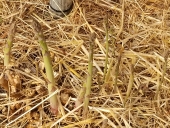




 1
1




Freakin' hippies and Squares, since 1986








Freakin' hippies and Squares, since 1986




Freakin' hippies and Squares, since 1986
























 2
2




 2
2






 1
1




klorinth McCoy wrote:Evening,
Question: can I just add leaves to the manure piles and get fungal growth started in the piles, then spread it where the trees and shrubs are located? Would that be enough to get fungal growth into the soil?




 1
1




klorinth McCoy wrote:James, thank you for the excellent advice. That was a really helpful response.
I'm thinking you are totally right about learning to grow mycelium.
My only difficulty with that plan is figuring out what to start with to learn. They don't really tell you what is easy to grow and learn with.
doesn't require multiple temperature changes. Our house is geothermal so the temp is a steady 20 Celcius (68-70F) with almost no fluctuation anywhere except in front of the big south facing windows.
Even the basement is designed to sit at 19 degrees. I could really use a suggestion of species.
I'm curious about the number of jars you are adding to your pile. How do you decide how many are needed? Or is it just what you have ready to go?
If I were to place small piles all around the property and put a jar in each one... I could spread the nutrients and mycelium quickly and not have to disturb the piles once the mycelium is established. I assume that would be much better for growing the fungi I want, where I want it??
 1
1













 1
1








Check out Redhawk's soil series: https://permies.com/wiki/redhawk-soil








Check out Redhawk's soil series: https://permies.com/wiki/redhawk-soil





Hans Albert Quistorff, LMT projects on permies Hans Massage Qberry Farm magnet therapy gmail hquistorff

|
When it is used for evil, then watch out! When it is used for good, then things are much nicer. Like this tiny ad:
The new purple deck of permaculture playing cards
https://www.kickstarter.com/projects/paulwheaton/garden-cards
|





